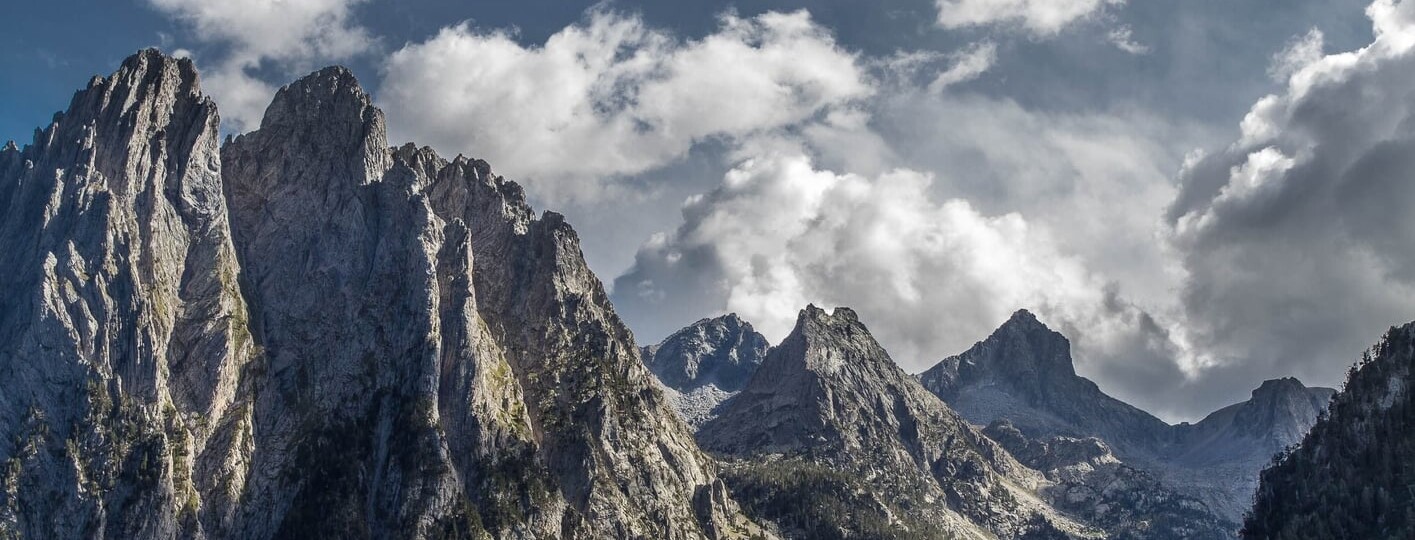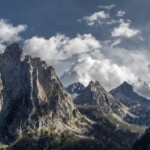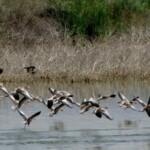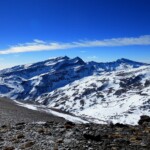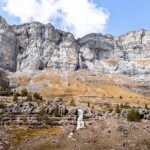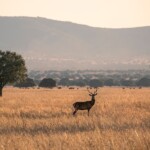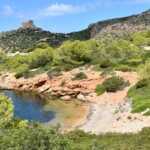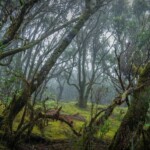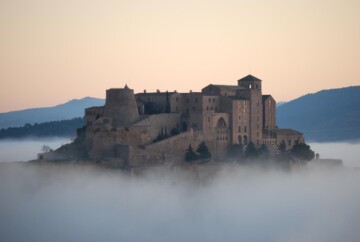There are 15 national parks in Spain, each one boasting amazing landscapes, unique flora and fauna, and beautiful views. Whether you want incredible beaches, active volcanoes, gigantic mountains, lush jungles, arid deserts, or even wetlands, you can find it among the best national parks in Spain.
To help you plan your trip, here is my complete list of national parks in Spain that you can keep handy for your next adventure. Also, some of these parks are among the top places to see in Spain, so it’s worth checking out that guide, too.
1. Teide, one of the best national parks in Spain
Teide National Park has been a UNESCO World Heritage Site since 2007 and part of the Natura 2000 Network. Its ecological and environmental importance makes it one of the best national parks in Spain that you can’t miss.
Mount Teide is the highest peak in the country, hovering nearly 12,200 feet above sea level, so it’s not surprising that it’s one of the best things to see in Tenerife. In addition, its surroundings include some unique plant species, like the red tajinaste, which blossoms in the spring, and the Teide violet, which only grows at altitudes above 8,200 feet.
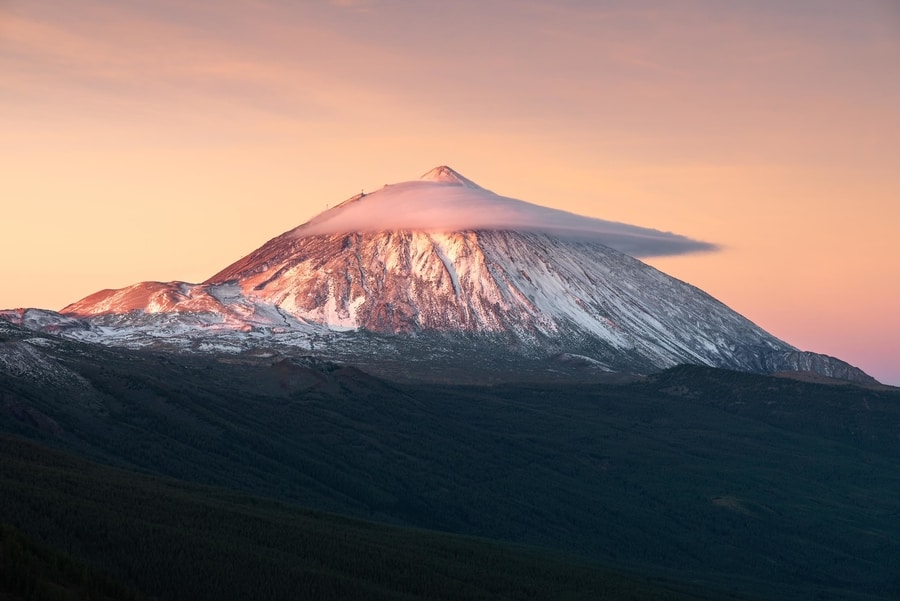
1. Teide, one of the best national parks in Spain
As for its animal species, here you can find different reptiles like the land mullet or blight lizard, birds like kestrels and shrikes, and endemic species like the Tenerife blue chaffinch. Also, keep your eyes peeled for mammals like the Corsican mouflon, a wild mountain sheep.
Teide’s beauty makes it one of the most famous national parks in Spain, and one of the most-visited parks in the country. If you’re going to visit, I recommend reading our guide on how to climb Mount Teide, although I’ll tell you now that the easiest option is to ride the cable car.
- Recommended accommodation: There’s no doubt that the Parador de Las Cañadas del Teide is the best option. Located at 6,560 feet above sea level, it offers impressive views of the surrounding area.
2. Guadarrama, an amazing national park in Spain on the mainland
Guadarrama is one of Spain’s national parks that you must visit for its varied botanical and geological landscapes.
As part of the network of national parks in Spain, Guadarrama encompasses 154,823 acres, half of which are protected land. Of this protected area, around 64% belongs to the Community of Madrid.
Guadarrama is home to 1,500 native plants and extensive forests of Scots pine trees. Regarding the park’s flora, you’ll see holm oaks, yew and holly trees, and various oak groves, meadows, and gallery forests.
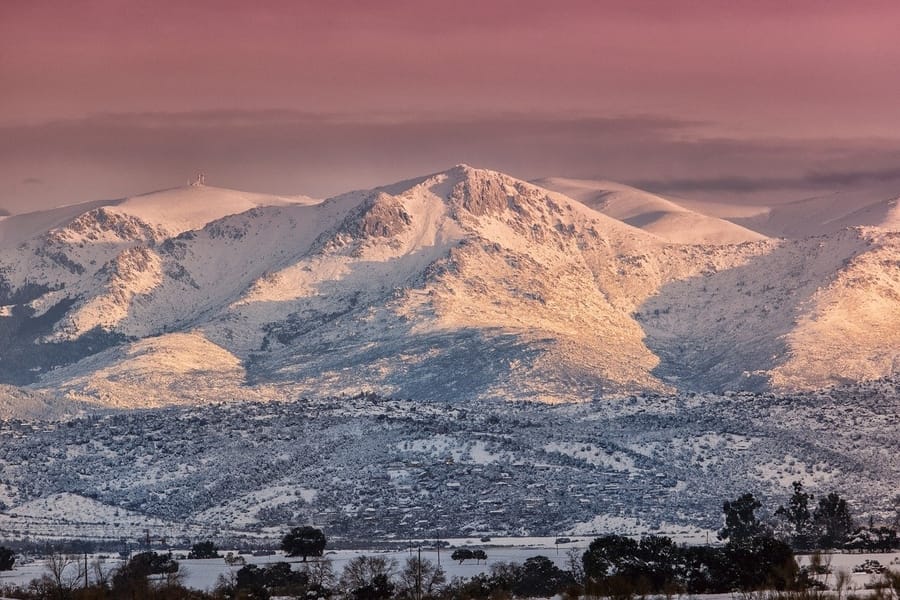
2. Guadarrama, an amazing national park in Spain on the mainland
The park is also known for its fauna, particularly the black vulture, imperial eagle, mountain goat, and roe deer. There are more than 1,280 species in Guadarrama, representing 45% of all animal species in Spain and 18% in Europe.
Finally, the park is just 45 minutes from the capital, so visiting it is one of the best things to do in Madrid. If you don’t have a car, I recommend this guided tour, which also passes by the Manzanares El Real Castle.
- Recommended accommodation: It’s best to stay in Rascafría, more specifically, the Hotel Rural El Valle. I have amazing memories of our weekend in this beautiful hotel.
3. Picos de Europa, an unforgettable national park in Spain you can’t miss
The Picos de Europa is a national park in Spain nestled in the Cantabrian Mountains, between the provinces of Asturias, León, and Cantabria. Without a doubt, it’s the ideal example of the Atlantic ecosystem and a place you should visit during your trip to northern Spain.
Besides the Western capercaillie, the golden eagle, and the bearded vulture, two of the country’s most iconic animals live within this park’s 166,684 acres: the brown bear and the Iberian wolf.
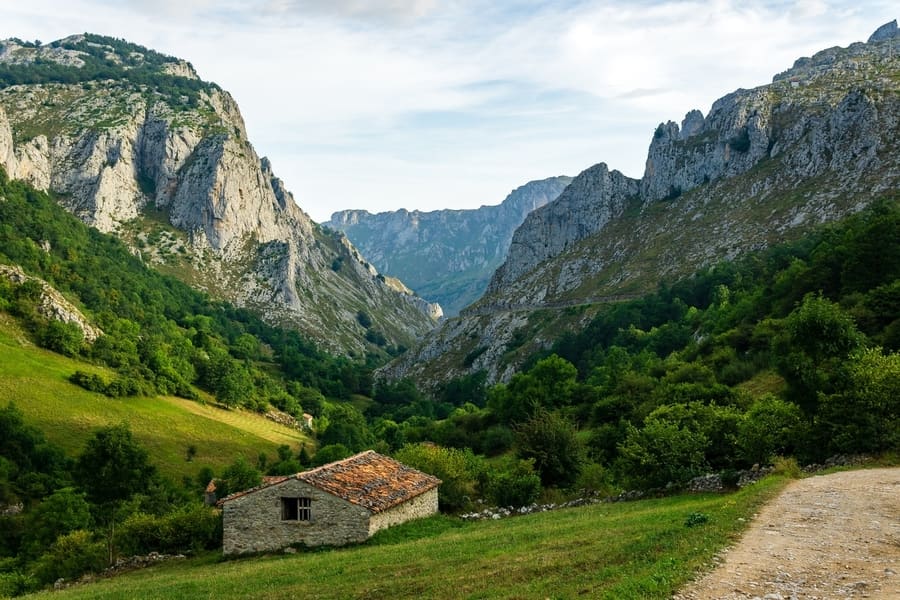
3. Picos de Europa, an unforgettable national park in Spain you can’t miss
Furthermore, some of the best places to visit here include the Lakes of Covadonga and its hermitage, the Fuente Dé cable car, the Naranjo de Bulnes, and the Sella River (known for rafting internationally). A nice way to explore this national park in Spain is by doing the Cares Trail via this hiking and jeep tour, which crosses the border between Asturias and León. This is one of the most beautiful hikes in Spain.
This excursion to the Lakes of Covadonga is another great option that takes you to the famous Lake Enol and Lake Ercina. It includes a stop at the plains, where shepherds rest during the summer to produce their delicious Gamoneu cheese.
- Recommended accommodation: You won’t regret staying at the Arcea Gran Hotel Pelayo. Located in the center of the national park, it offers views of Covadonga Cathedral.
4. Timanfaya, another top national park in Spain you should see
Timanfaya is a national park in Spain that you must visit at least once in your life. Besides, it’s one of the top things to do in Lanzarote, so if you’re going to the island, you can’t miss it.
Not only that, but Timanfaya National Park is one of the best places in Spain due to its geomorphological structures and landscapes. Several eruptions in the 18th and 19th centuries created the red, orange, ochre, and black colors that you see here today.
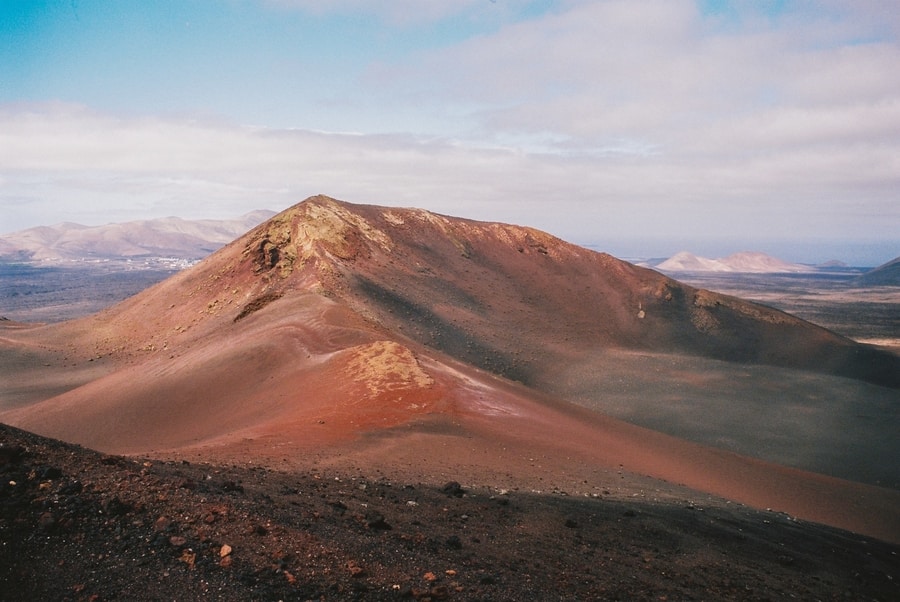
4. Timanfaya, another top national park in Spain you should see
All in all, Timanfaya has over 25 volcanoes, with one of the most popular being the Montañas del Fuego. Visiting this volcano is like stepping onto another planet, and if you go with kids, I recommend eating at El Diablo Restaurant, where they do famous fumarole demonstrations and barbecues cooked over volcanic heat.
If you go to this famous national park in Spain, be sure to stop by the Visitor Center first, to gather all the necessary info. Also, if you’re going to be in Lanzarote without a car, or you want to avoid long queues, I recommend booking this tour in advance.
- Recommended accommodation: The El Hotelito del Golfo is just a five-minute walk from the beach and offers views of the volcanoes and the sea. Another plus is that it has a lovely saltwater pool.
5. Garajonay, one of the best national parks in Spain to visit
Garajonay National Park is one of the best places to see in La Gomera and one of the most unique national parks in Spain that you must visit.
UNESCO declared it a World Heritage Site in 1981 and, since 2012, it has also been a Biosphere Reserve, along with the rest of the island.
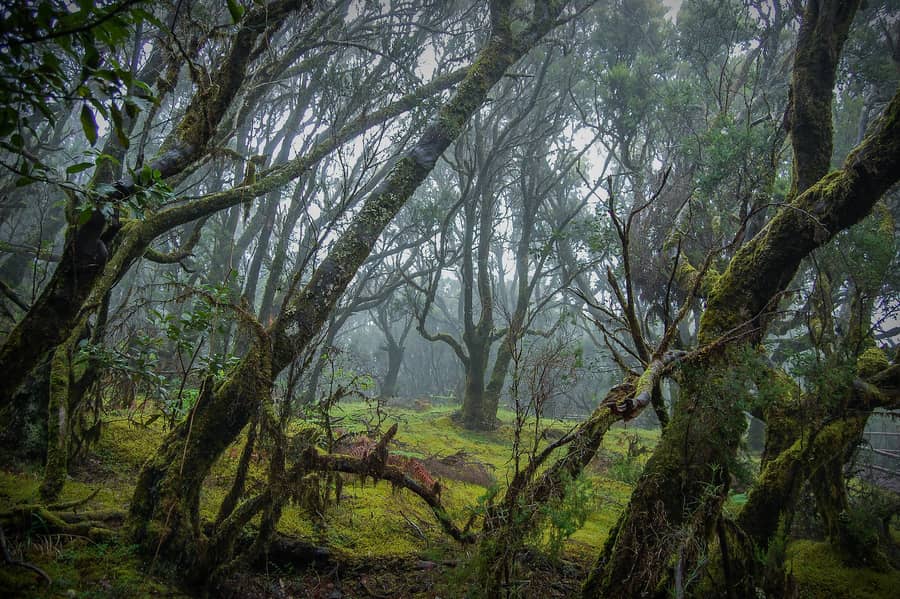
5. Garajonay, one of the best national parks in Spain to visit
I promise you that visiting this place is like being in a fairytale, thanks to its laurel forest, where a wide variety of animal and plant species live. For this reason, walking through this landscape is one of the best excursions you can do through a national park in Spain. In addition, you’ll see the Roque de Agando, a volcanic geological formation that reaches a height of 4,100 feet, making it one of the most popular sites on the island.
At Garajonay’s Visitor Center, you’ll find all the information you’ll need to explore the park. That said, I highly recommend this hiking route to discover all the impressive flora and fauna in the region. If you’re going during peak season, book in advance since this small-group guided tour sells out quickly.
- Recommended accommodation: I prefer the Canarian-style Apartamentos Los Telares to spend a few days in La Gomera. They have spectacular views, lush gardens where you can watch a sunset, and a unique water mill.
6. Sierra Nevada, the biggest national park in Spain
Just over 60 miles from the Mediterranean Sea, you’ll find Spain’s Sierra Nevada national park, one of the best national parks in the country. It’s also the largest national park in Spain, covering an area of 213,000 acres.
Sierra Nevada is wildly popular in the winter, as it has over 70 skiable miles, 120 slopes, and the perfect snow for skiing and snowboarding. If winter sports are your thing, I recommend this snowshoeing tour for a different way to explore its peaks.
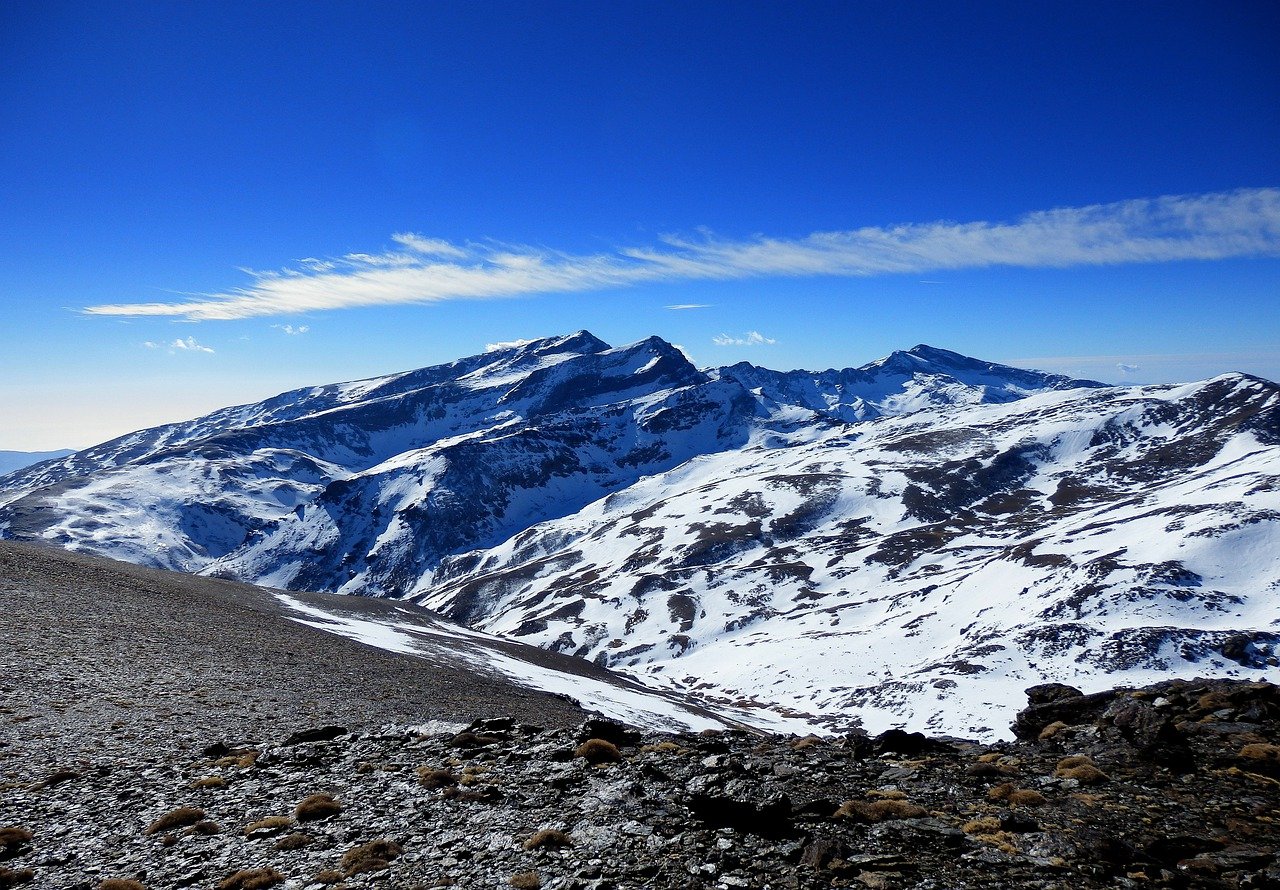
6. Sierra Nevada, the biggest national park in Spain
Of course, it’s not just the snow that makes Sierra Nevada one of the best national parks in Spain. This natural paradise was declared a UNESCO Biosphere Reserve in 1986 before acquiring National Park status in 1989. Moreover, it has the highest peak in the Iberian Peninsula, Mulhacén, with an altitude of 11,414 ft, and the iconic Alpujarra, which is known for its white villages lining the mountain slopes.
With its variety of plant species and climates, there is a wide range of fauna in these mountains in Southern Spain. In the high mountains, you can see birds like the alpine accentor, the solitary rock thrush, and the red-billed chough. Hiding in the riparian forests, you’ll find kingfishers and dippers. Besides aviary species, there are foxes, badgers, and wild boars roaming the landscape.
- Recommended accommodation: The Vincci Selección Rumaykiyya is the perfect alpine-style hotel for your trip to Sierra Nevada. If you go during peak season, you can enjoy direct access to the ski lifts, free transfer to Pradollano, ski storage, and an on-site rental shop. Best of all, it offers body treatments so you can recover after a day on the slopes.
7. Ordesa and Monte Perdido, Spain’s national park and UNESCO World Heritage Site
Declared a UNESCO World Heritage Site, Ordesa and Monte Perdido, in the Huesca Pyrenees, is a breathtaking national park in Spain.
This park is considered the authentic heart of the Pyrenees, and includes a series of four valleys: Ordesa, Añisclo, Escuaín, and Pineta. All of them extend around Monte Perdido, which holds the title of the highest calcareous massif in Europe.

7. Ordesa and Monte Perdido, Spain’s national park and UNESCO World Heritage Site
If you can only visit one valley, I recommend Ordesa, the crown jewel of the park. It features beauties like the Tozal del Mallo mountain, the Cascada del Estrecho, and the Bosque de las Hayas (Beech Forest). Here, you’ll also be able to see bearded vultures, eagles, and marmots on the many excursions available here.
There are 1,400 species of flora here, and due to the park’s variations in climate, the vegetation changes a lot, so it’s quite a unique place. For this reason, Ordesa and Monte Perdido was one of the first protected national parks in Spain, and all of Europe.
- Recommended accommodation: Sleep at the Silken Ordesa, a mountain hotel with a spa, a seasonal outdoor pool, and impressive views of the Pyrenees. Also, when it’s cold, you can enjoy snuggling by the fireplace in your room.
8. Aigüstortes and Sant Maurici Lake, a national park in Spain with beautiful landscapes
Among this list of national parks in Spain, I must mention Aigüestortes and Sant Maurici Lake, the only national park in Catalonia.
Located in the central part of the Pyrenees, this park covers 40 square miles and consists of two areas: the eastern and the western. Moreover, the park is characterized by its high mountain peaks and nearly 200 lakes, the most famous being Sant Maurici Lake.
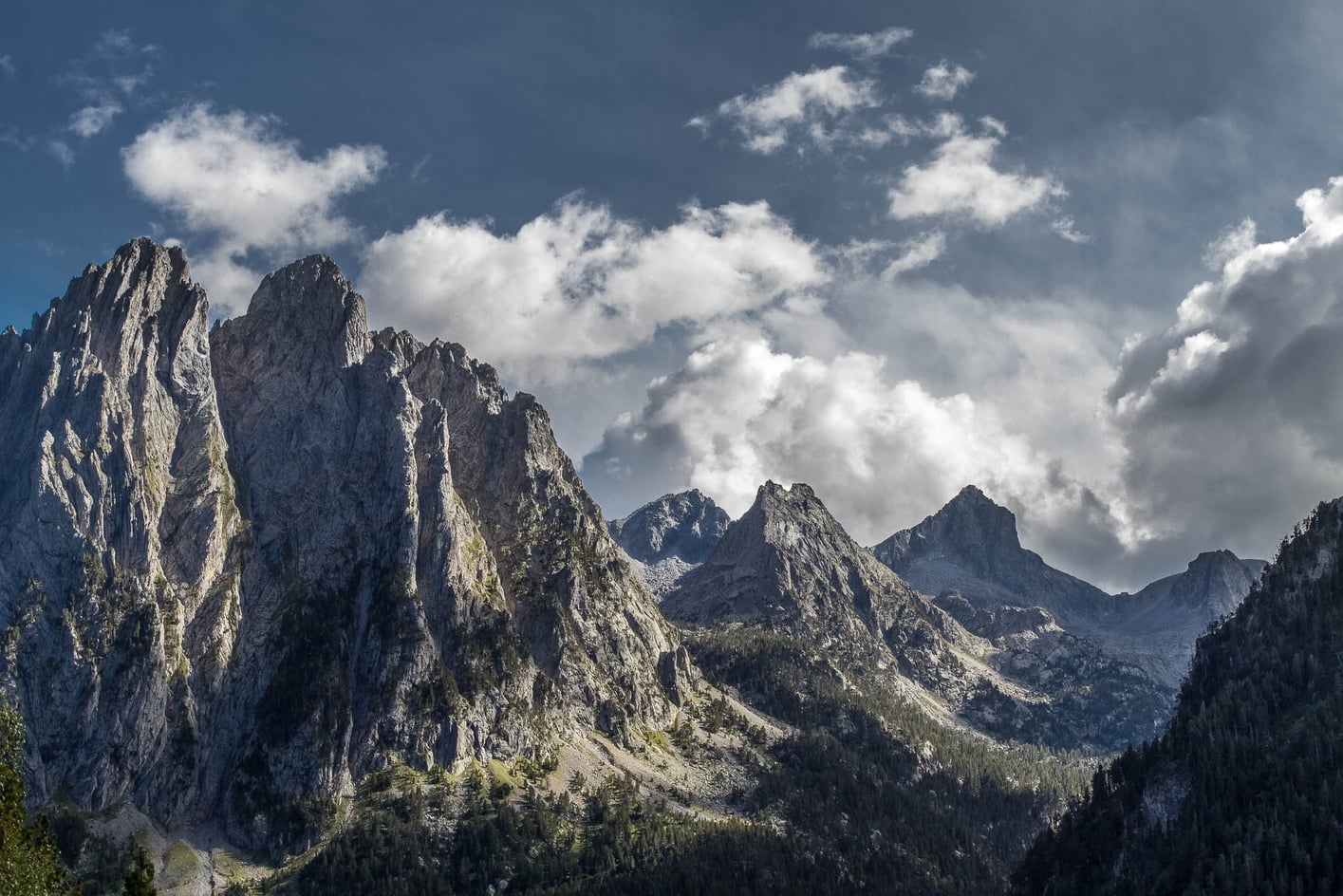
8. Aigüstortes and Sant Maurici Lake, a national park in Spain with beautiful landscapes
As far as its flora goes, the Scots pine trees and junipers stand out among the gorgeous landscape. As for the fauna, here you can see the capercaillie, which is currently endangered, as well as the Pyrenean desman and the Pyrenean brook salamander.
Of all of Spain’s national parks, Aigüestortes and Sant Maurici Lake is the perfect place for all kinds of mountain activities, especially hiking and mountain biking. There are also many environmental education programs being developed, so it’s a great place to go with kids. My advice is to do this hiking route so you don’t miss out on this natural wonder.
- Recommended accommodation: Stay at Hotel Saurat, especially if you go in winter, as it’s incredibly beautiful when there’s snow. It offers great mountain and garden views, as well as a terrace, a fireplace lounge, a library, and a kids’ game room.
9. Caldera De Taburiente, an idyllic national park in Spain
Another important national park in Spain can be found in the Canary Islands. Caldera de Taburiente is not only one of the country’s top national parks, but it’s also among the best places to visit in La Palma.
Declared a National Park of Spain in 1954, the park covers over 11,860 acres. The famous Caldera de Taburiente is the park’s crown jewel and namesake and consists of a 5-mile-wide crater in which several volcanic eruptions have taken place. One of the best ways to see it is by taking this hiking tour.

9. Caldera De Taburiente, an idyllic national park in Spain
Caldera de Taburiente National Park also has several waterfalls, including the Cascada de los Colores. Another waterfall, the Cascada de La Fondada, has a drop of 492 feet and forms several streams that add to the beauty of the volcanic landscape. All of these geological features explain why the park became part of the World Network of Biosphere Reserves in 2002, along with the rest of La Palma.
- Recommended accommodation: The H10 Taburiente Playa hotel is just four minutes from the beach and has three outdoor pools, a sauna, tennis courts, and free parking. It’s the perfect accommodation to experience both the mountains and the sea.
10. Atlantic Islands of Galicia, a maritime-terrestrial national park in Spain
If you’re wondering where to find the most beautiful national park in Spain, I’ll tell you that the Atlantic Islands of Galicia is a solid option. Encompassing 21,000 acres, this park sits in the heart of the Rías Baixas region.
The islands emerge from the Arousa and Vigo estuaries in the Atlantic Ocean, mixing fresh water and saltwater. Its dunes, seabeds, and beaches create a unique mosaic of ecosystems that are definitely worth visiting.
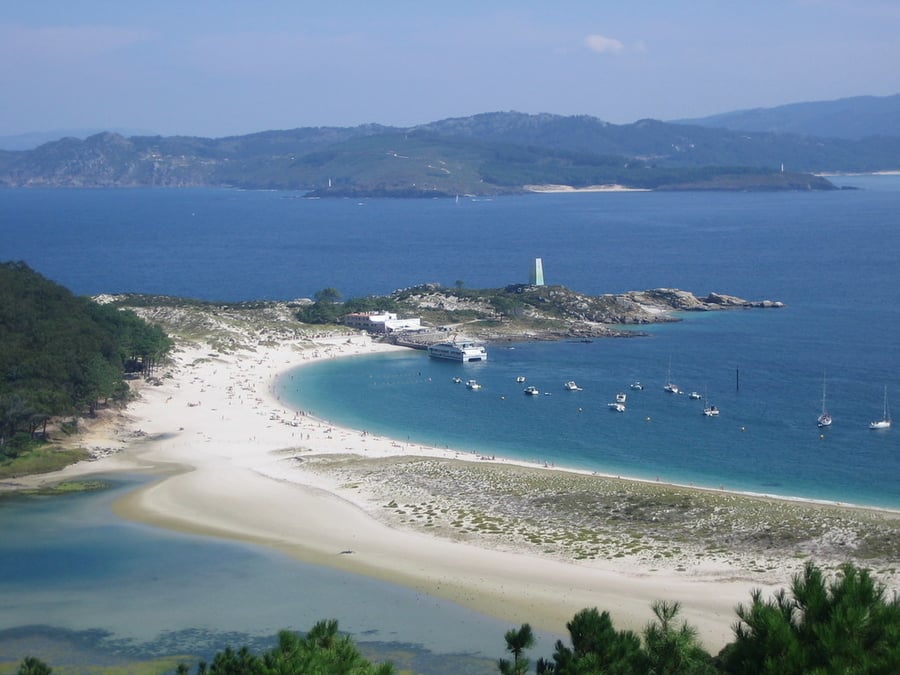
10. Atlantic Islands of Galicia, a maritime-terrestrial national park in Spain
Specifically, this national park is made up of the Ons, Sálvora, Cortegada, and Cíes archipelagos. The latter is home to Rodas Beach, one of the best beaches in Spain. To get there, the best option is booking a boat trip or this ferry service in advance, the latter of which takes care of requesting your permit so you can access the area.
Also, if you can, go to the Monte Faro viewpoint to see the Cíes Islands and Vigo estuary from above.
- Recommended accommodation: Book a room at the beautiful Hotel Pazo Los Escudos Spa & Beach. I plan to stay here on my next trip to the Cíes Islands since it’s just three minutes from the beach and has rooms overlooking the gardens and sea. The hotel also has an outdoor pool and spa, so it’s a great deal.
11. Doñana, one of the most beautiful national parks in Spain
Doñana is one of the most famous national parks in Spain, extending over 133,435 acres across the provinces of Huelva, Seville, and Cádiz.
This is one of Spain’s most important national parks since it contains the largest ecological reserve in Europe. Its aquatic and terrestrial ecosystems give it specific characteristics that contribute to its unique diversity. Here, you’ll see dunes, its 17-mile beach, and marshes that serve as a habitat to flamingos, herons, red ducks, and other birds. The park is also home to several endangered species like the Iberian lynx and the imperial eagle.
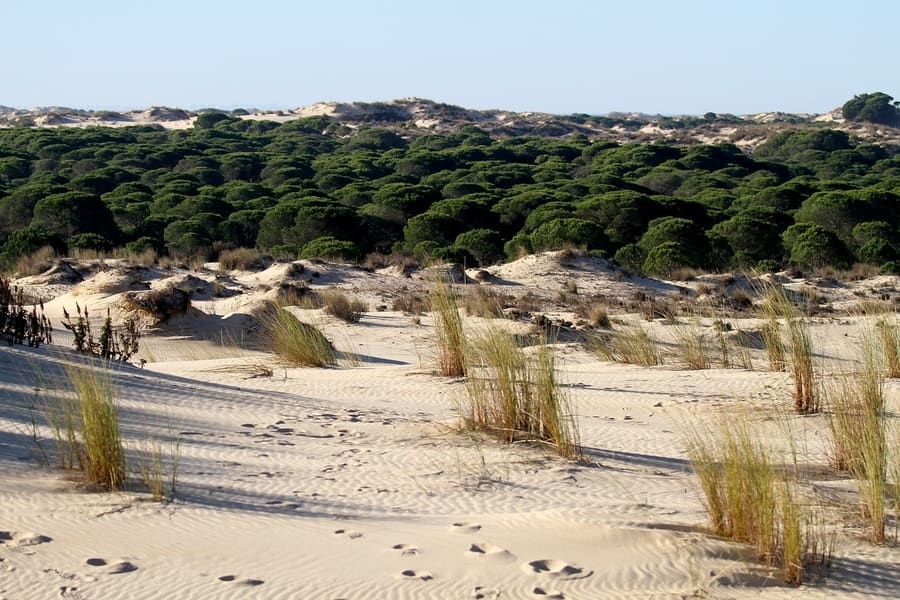
11. Doñana, one of the most beautiful national parks in Spain
The careful conservation efforts being done in Doñana led to it becoming a UNESCO World Heritage Site in 1995. Just a few months later, the European Council awarded it the European Diploma of Protected Areas. It’s also part of the Network of National Parks of Spain.
As you can see, there is so much this national park in Spain has to offer, so I recommend booking this guided tour to ensure you don’t miss anything.
- Recommended accommodation: I suggest staying at Macia Doñana, a modern hotel right next to Sanlúcar de Barrameda Beach and Doñana National Park. Here, you can do it all, as well as enjoy the seasonal outdoor pool.
12. Monfragüe, one of the most important national parks in Spain
Monfragüe is a national park in Spain, in the center of Cáceres. It was declared one of Spain’s natural and national parks in 1979 and, in 1988, it was declared a Special Protection Area (SPA) for wild birds. In 2003, UNESCO recognized it as a Biosphere Reserve and, in 2017, it obtained national park status.
As you can imagine, Monfragüe is one of the hottest points of ornithological interest in Spain. Here, you can see imperial eagles, Egyptian vultures, Eurasian eagle-owls, herons, and, above all, griffon vultures.

12. Monfragüe, one of the most important national parks in Spain
Entrance to Monfragüe is free and, being so close to the Monumental Villa of Plasencia, I recommend taking this tour. Along with visiting those two sites, it also takes you to the Royal Monastery of Yuste, so it’s well worth it.
- Recommended accommodation: Stay at the Hospederia Parque de Monfragüe, right between Plasencia, Trujillo, and Cáceres. Not only is it perfect for sightseeing, but it also has a seasonal outdoor pool and spa.
13. Tablas de Daimiel, a beautiful national park in Spain to visit with kids
The wetland known as the Tablas de Daimiel was declared a national park in Spain in 1973 and a Biosphere Reserve in 1981. It’s part of the Network of National Parks of Spain and is the country’s only example of a fluvial ecosystem.
This area is very curious since it mixes the characteristics of a flood plain, with is produced by overflow from the Guadiana and Cigüela Rivers, with that of the groundwater layer of an aquifer. Moreover, it boasts a variety of aquatic vegetation and fauna, including northern shoveler ducks, grey herons, cinnamon teals, purple herons, and Eurasian bitterns. Its best to observe them in the early hours of the morning, or late afternoon.

13. Tablas de Daimiel, a beautiful national park in Spain to visit with kids
Entry to the Tablas de Daimiel is free year-round, although the summer hours are from 9:00 am to 9:00 pm, while the winter hours are 9:00 am to 6:00 pm. One of the best, and cheapest, ways to see this national park in Spain is by booking this tour.
- Recommended accommodation: Stay at Hotel Doña Manuela, which is in the park and has a tranquil and quiet ambiance to help you sleep soundly in nature.
14. Cabrera Archipelago, another maritime-terrestrial national park in Spain to visit
The Cabrera Archipelago is another significant national park in Spain and consists of a group of islands and limestone islets from the Balearic archipelago. This island ecosystem is among the best-preserved aquatic environments in the Mediterranean.
Also, the seabed is the largest part of this national park, covering 22,240 acres and serving as a home for over 200 fish species and 400 botanical species.
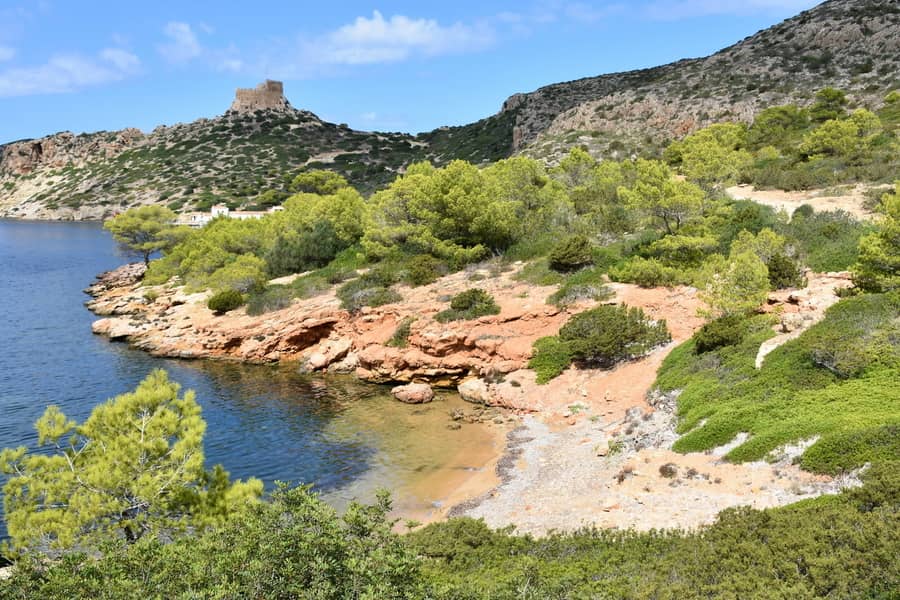
14. Cabrera Archipelago, another maritime-terrestrial national park in Spain to visit
Under the water, the seagrass meadows of Neptune grass (Posidonia oceanica) sprawl across the ocean floor. If you can, visit Sa Cova Blava and book this excursion, which includes a boat ride from the port of Colonia de Sant Jordi to Cabrera. Spots fill up quickly during peak season, so don’t hesitate to book it.
While Cabrera is the main island, there are 19 total islets that make up this archipelago, creating one of the most beautiful national parks in Spain.
- Recommended accommodation: I highly recommend the THB Sur Mallorca in the fishing town of Colonia de Sant Jordi, in the south of Mallorca. It has an 82-ft outdoor pool, two tennis courts, and balconies overlooking the Mediterranean, so it’s the best place to stay.
15. Cabañeros, another famous national park in Spain you should see
Cabañeros, located in the provinces of Ciudad Real and Toledo, is one of Spain’s national parks that you can’t pass up. Its name comes from the charcoal-heated cabins the shepherds used as a temporary shelter while working in the fields.
One of the things that makes Cabañeros a must-see is its beautiful Mediterranean forests. Here, you can see several endangered species and fossils dating back millions of years. Among the birds and animals that you’ll see in the plains and open forests are mountain goats, imperial eagles, and black vultures. There is also lots of botanical richness here, with 22 species listed as vulnerable or of special interest.
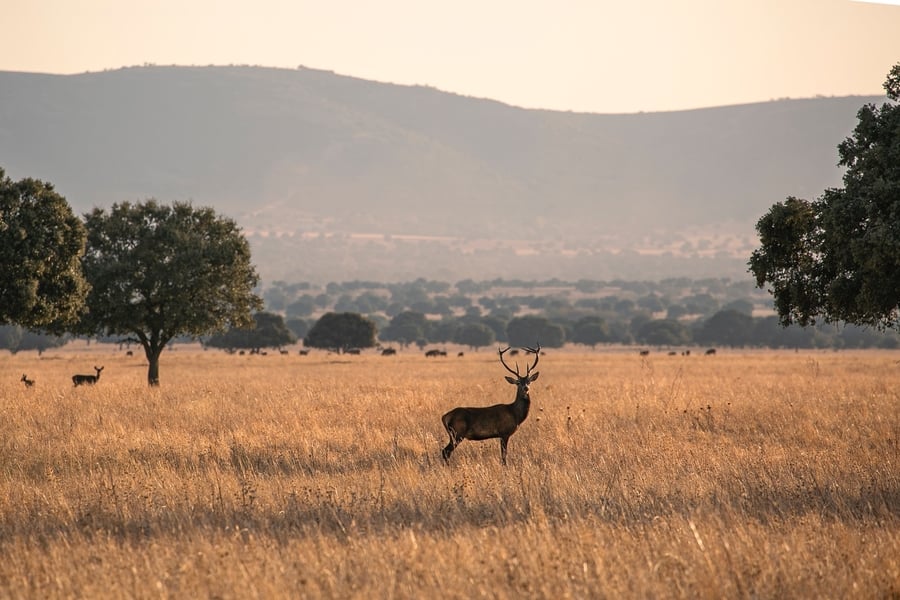
15. Cabañeros, another famous national park in Spain you should see
I recommend visiting this national park in Spain any time of the year. It’s also well worth exploring the hiking routes here, and you can do them on foot or by 4×4.
- Recommended accommodation: El Refugio de Cristal is a sustainable hotel in the Hontanar Valley, six miles from the national park. It has a private terrace with incredible views, as well as a lounge/observatory and a large garden with a stream running through it.
Map of national parks in Spain
Finally, to help you quickly locate each one, here is a map of the national parks in Spain that I mentioned.
Of course, if you have any questions or you want to tell me about your experience in these parks, leave me a comment below. I’ll be happy to respond to you. Until then, have a safe and happy trip!
